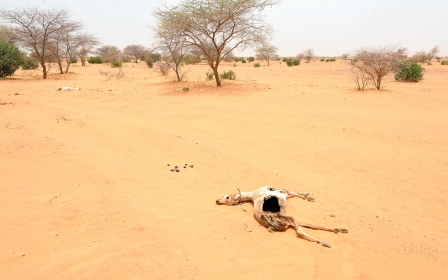Dubai’s building boom fiercely fuelling global warming

Planning to buy an apartment in Dubai but worried about coping with living in a city with some of the hottest temperatures on earth? You might want to look at the latest research showing that the Gulf state – where summer temperatures regularly top 40C – is getting hotter.
Some of that heat increase can be put down to the combined effects of climate change and the present El Nino system in the Pacific, pushing average global temperatures for the month of February up to their highest level on record.
Now there’s evidence that Dubai’s massive construction programme over recent decades is adding to heat levels, with temperatures in many areas of the state in January – usually the coolest month in the Gulf – rising by as much as 2C.
The ups and downs of Dubai’s construction sector are a familiar story - a boom in the years up to 2009 and then a spectacular bust as the global financial crisis hit, was followed a few years later by another boom which is still going on today.
Over the past 40 years, the rate of urban growth in Dubai has been among the world’s highest, with annual expansion rates of between 10 percent and 13 percent.
Stay informed with MEE's newsletters
Sign up to get the latest alerts, insights and analysis, starting with Turkey Unpacked
Emily Elhacham and Pinhas Alpert from Tel Aviv University used temperature records and one of the most up to date satellite imaging systems, called MODIS, to chart various weather factors in both Dubai’s urban areas and on newly constructed islands, such as the controversial and much delayed Palm Jebel Ali and the Palm Jumeirah.
Their study published in February, found that all that concrete and glass, all those kilometres of roads and mega car parks that have been built, had darkened what was, till recently, a near white desert.
Whereas white, bright areas are good at reflecting solar light back into space – a process scientists refer to as the albedo effect – the darkened surfaces of buildings and roads absorb more heat.
The researchers found that over a large part of urban Dubai, the albedo effect has significantly reduced, leading to more heat being absorbed at ground level. At the heart of the areas where less heat is being reflected - and temperatures are rising – rest giant new developments such as Media City, Internet City and International City.
“The newly urbanised areas are characterized by the highest increases - up to 2C,” the study said.
“Those increases are higher than the ones exhibited in most inland desert areas; thus, those high trends may be stronger than the regional climate change and can also be related to decreased albedo and increases in net radiation.”
The researchers also found that overall humidity levels in Dubai are increasing and that the sudden explosion in the number of high-rise buildings has the effect of blocking cooling winds and decreasing wind speeds.
One piece of good news is that if you’re thinking of buying an apartment on one of the newly constructed islands off Dubai’s coast – developments that can be seen from space – there’s a chance that temperature rises will be more moderate.
The study found that whereas mainland Dubai is heating up, average January temperatures on the artificial islands were decreasing slightly - by nearly 0.5C. Dark open water - which absorbs heat – is being replaced by lighter coloured buildings and sandy beaches which reflect more heat back into space.
But overall, the outlook weather-wise for Dubai and for the Gulf region is not good, according to climate scientists.
They warn that unless there is a significant drop in global emissions of climate warming greenhouse gases, the whole of the Arabian Peninsula will face potentially devastating and prolonged heat waves, testing the limits of human existence.
Dubai has been more progressive than most in the region on climate change: it has taken big steps to diversify its economy away from fossil fuels and it has an ambitious solar energy programme, aiming to produce 75 percent of electricity from solar by mid-century.
The trouble is that as the construction continues, with more and more buildings darkening the desert landscape and absorbing more heat, the temperature gauge is likely to keep on rising.
- Kieran Cooke is a former foreign correspondent for both the BBC and the Financial Times, and continues to contribute to the BBC and a wide range of international newspapers and radio networks.
The views expressed in this article belong to the author and do not necessarily reflect the editorial policy of Middle East Eye.
Photo: Visitors gather near a scale model of Sheikh Mohamed Bin Rashid al-Maktoum city at the annual Cityscape Global show, which has served in the past as the launchpad for grandiose projects, on 21 September, 2014, in the Gulf emirates of Dubai (AFP).
Middle East Eye delivers independent and unrivalled coverage and analysis of the Middle East, North Africa and beyond. To learn more about republishing this content and the associated fees, please fill out this form. More about MEE can be found here.





